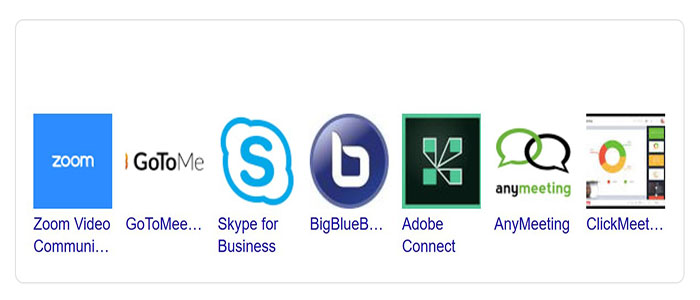If you have been working from home or if you pay attention to the stock market, you have likely heard about Zoom. This on-trend video streaming service provider has become seemingly ubiquitous now that white-collar workers are videoconferencing from home and families/friends are interacting with one another through screens. However, there are several other videoconferencing services available aside from Zoom. From Skype to WebEx, Go To Meeting and beyond, Zoom has plenty of competition. One has to wonder, how, exactly, did Zoom rise to the top?
Zoom’s Merits
Give Zoom a try and you will find it functions fairly well. Though there are some audio snafus that pop up throughout the typical Zoom video stream, the platform is nearly flawless in other regards. It is particularly interesting that Zoom’s brass has gone to the extent of adding a filter to improve aesthetic beauty. Though this might seem like a minor feature, it is one of the many things that makes Zoom slightly superior to some of the competition. Zoom also provides fun virtual backgrounds, allowing users to switch out the real-world background behind them for a faux image of their choice such as their company’s logo, a boardroom, or even interstellar space.
Function as Well as Form
Above all, Zoom’s rise to popularity is attributable to its top-notch functionality. The vast majority of those who use Zoom eagerly testify the platform’s user experience design is quite fluid with a brief learning curve anyone can master regardless of their tech prowess. The entirety of meetings can be recorded. The icing on the cake is the fact that Zoom users can stream video of higher quality than that available in Hangouts and many other videoconferencing services.
Zoom is Customer-centric
A large part of the reason why Zoom founder Eric Yuan departed Webex more than 20 years ago is he wanted to provide a customer-focused video streaming service. Zoom’s primary mission is to satisfy customers. Yuan, along with 40 engineers from his professional networks at Webex and Cisco, segued over to Zoom, fully focused on providing an unparalleled user experience. All in all, these engineers have more than 1,000 combined years in the videoconferencing industry. The end result is videoconferencing that does exactly what it is intended to do – work. Indeed, Zoom’s popularity is largely the result of its reliability, elite user experience design, and high-quality video with minimal interruption.
A Recognizable Brand
Though Zoom’s videoconferencing service is certainly one of the best available, it is not vastly superior to the competition. When competing companies provide services of similar quality, those who win market share often do so as a result of their brand recognition. In short, people are more willing to give their business to companies with a recognizable brand name, logo, or slogan. Zoom excels particularly well with branding. The company’s branding experts narrowed their focus on getting the company’s product in the hands of early adopters – meaning those who are trend-setters and have a natural curiosity about new technology. The gamble on early adopters has paid off quite well as this coveted cohort has been more than willing to spread the word about Zoom’s merits, providing invaluable word-of-mouth marketing that is quite cheap compared to traditional overt outbound ads through the conventional mediums of TV, magazines, radio, internet display ads, etc.
Perception and Momentum are the Keys to Zoom’s Success
The moral of Zoom’s story is building a recognizable brand and establishing a rapport with an influential customer cohort is just as important – or possibly more important – than the merits of a business’s services. Zoom has won the all-important battle of perception, making it appear as though its videoconferencing service is somehow on-trend and different from other services. Though this is true to an extent, those who have used competing videoconferencing services will testify the differences between the top providers are fairly insignificant. Rather, what matters most is momentum and perception that creates a self-reinforcing customer “groupthink” of sorts, sending one new user after another in Zoom’s direction.


















Add comment